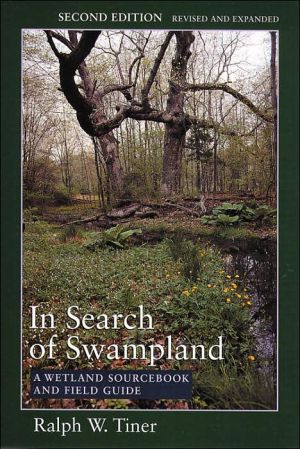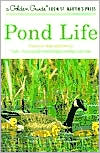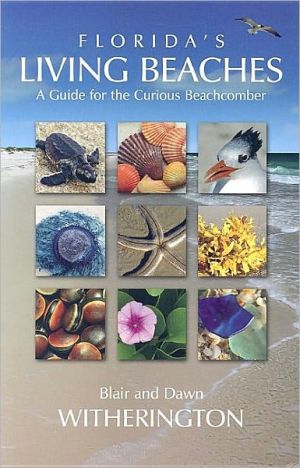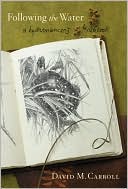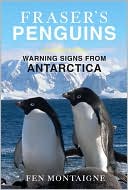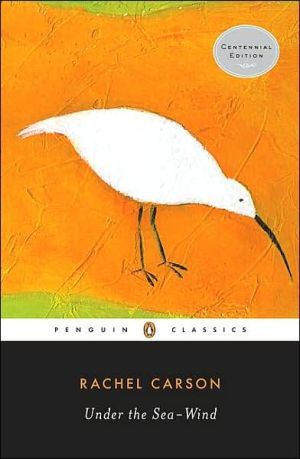In Search of Swampland: A Wetland Sourcebook and Field Guide
In the revised and expanded edition of this classic guide, Ralph W. Tiner introduces readers to the ecology and beauty of the wetlands in eastern North America. Topics include their formation and functions, wetland types, causes of loss and degradation, and recent efforts to protect them. The discussion now includes many examples from the Great Lakes region and information on best management practices for working in and around wetlands including vernal pools. A new chapter on classification...
Search in google:
Traditionally, most Americans have viewed natural wetlands as wastelands, places to be drained and converted for farming or filled for housing and industrial development. To date, over half of the country's wetlands that existed when the Pilgrims first landed in America have been destroyed. Today these "wastelands" are beginning to be recognized as one of the world's most valuable natural resources. They are the temperate zone equivalent of rain forests, serving vital life-sustaining functions in water-quality renovation, aquatic ecosystem productivity, and biodiversity, as well as providing benefits such as flood-damage protection and shoreline stabilization.In the revised and expanded edition of this classic guide, Ralph W. Tiner introduces readers to the ecology and beauty of these valuable natural resources. Topics include the formation and functions of wetlands, wetland types, causes of loss and degradation, and recent efforts to protect them. The discussion now includes many examples from the Great Lakes region and information on best management practices for working in and around wetlands including vernal pools. A new chapter on classification and assessment further clarifies how the unique characteristics of wetlands serve specific functions.In Search of Swampland also provides a field guide to wetland plants, soils, and animals. It includes detailed descriptions and illustrations many of which are new to this edition of more than 300 plants and 200 animals. Clear identification keys, information on how to distinguish typical hydric or "wet" soils from dryland soils, and general procedures for identifying wetlands in the field make this book an indispensable resourcefor readers with little or no training in wetland science, as well as for the scientist or amateur naturalist.While the book focuses on the northeastern and north-central regions of the United States (from Maine through Maryland and west to the Great Lakes states), many of the plants and animals described are common throughout much of the eastern United States. Tiner also includes a list of Northeastern wetlands to visit and suggestions on how we can all help save these vital, threatened areas. Library Journal Tiner, a noted wetlands ecologist, has an evident affection for swamps, marshes, and bogs. In this readable yet comprehensive book, he proves to be an enthusiastic guide to all aspects of the wetland environment. In the first section, he gives a narrative description of wetland formation, function, and value. In addition to in-depth explanations of wetland science, Tiner offers the reader a view of ancillary sciences such as hydrology and archaeology. He concludes here with a chapter on the status of wetlands, reviewing trends in their destruction and protection. In the second half of the book he presents an identification guide with descriptions and line drawings of wetland plants and animals. He also includes a chapter on hydric soils, the swampy and soggy ground underlying all wetlands. Recommended as a good introduction to wetland ecology for academic and larger public libraries.--Randy Dykhuis, Michigan Library Consortium, Lansing
List of Illustrations and TablesPrefaceAcknowledgmentsPt. IWetland PrimerCh. 1Swampland, Marshland, Wetland: Wetland Concept and Definitions3Ch. 2Water, the Lifeblood of Swampland: Wetland Hydrology14Ch. 3The Birth and Growth of Swampland: Wetland Formation and Evolution28Ch. 4Swamp Earth: Hydric Soils40Ch. 5Swamp Plants: Hydrophytes and Wetland Plant Communities45Ch. 6Swamp Things: Wetland Wildlife74Ch. 7Swampland at Work: Wetland Functions and Values84Ch. 8Swampland Now and Then: Wetland Status, Trends, and Protection96Pt. IIWetland Identification GuideCh. 9Recognizing Wetland Plants117Ch. 10Interpreting Hydric Soils177Ch. 11Identifying Wetland Wildlife187Ch. 12Finding Wetlands and Their Boundaries: Wetland Identification and Delineation229App. AA Call to Action: SOS - Saving Our Swampland239App. BWetlands to Explore244Glossary249References257Index261
\ associate professor of wetland ecology, University of Maine\ - Aram JK Calhoun\ Ralph Tiner transforms 'wastelands' into national treasures. His book provides an accessible introduction to wetland ecology and management for students, the public, and wetland scientists.\ \ \ \ \ Library JournalTiner, a noted wetlands ecologist, has an evident affection for swamps, marshes, and bogs. In this readable yet comprehensive book, he proves to be an enthusiastic guide to all aspects of the wetland environment. In the first section, he gives a narrative description of wetland formation, function, and value. In addition to in-depth explanations of wetland science, Tiner offers the reader a view of ancillary sciences such as hydrology and archaeology. He concludes here with a chapter on the status of wetlands, reviewing trends in their destruction and protection. In the second half of the book he presents an identification guide with descriptions and line drawings of wetland plants and animals. He also includes a chapter on hydric soils, the swampy and soggy ground underlying all wetlands. Recommended as a good introduction to wetland ecology for academic and larger public libraries.--Randy Dykhuis, Michigan Library Consortium, Lansing\ \ \ Cornell UniversityIf you want a comprehensive introduction and field guide to wetlands, written by one of America's most broadly knowledgeable wetlands biologists, Tiner's book is it.\ — Barbara Bedford\ \ \
